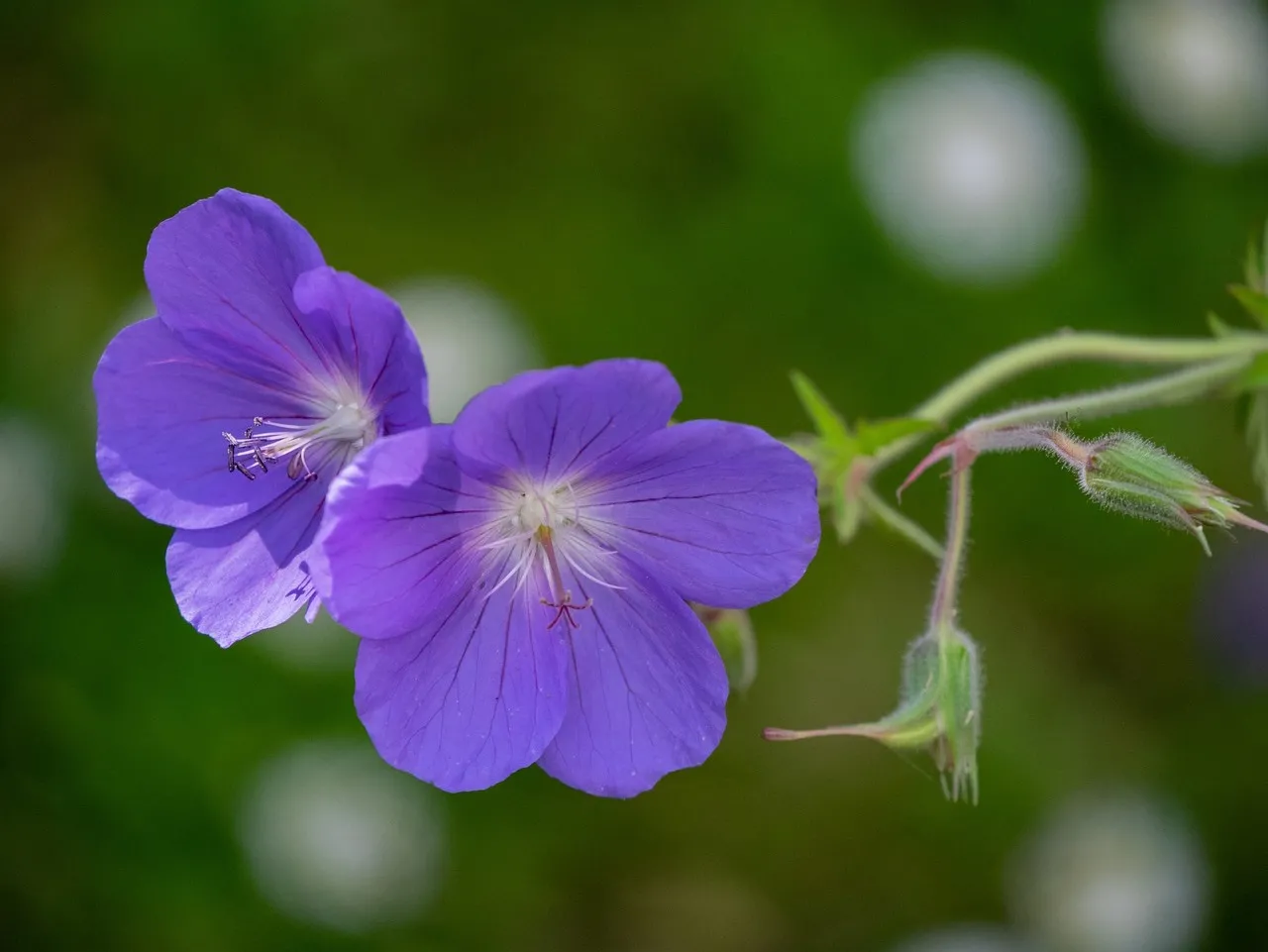Hi @granny
Thanks for your comment on Hardy Geraniums. They are one of my favourite beginner bullet proof plants.

Whilst they self seed and propagate quickly as plants they are not invasive and won’t harm other plants. Their fleshy roots are gentle and so my advice would be to enjoy the free plants and pollen that these fantastic plants bring!
Hardy geraniums (not to be confused with the more tender Pelargoniums) are a favourite among gardeners for their resilience, long flowering season, and wildlife-friendly appeal. Here are ten interesting and informative facts about them:
1. They’re not “true” geraniums in the common sense
Most people associate the word “geranium” with bedding plants (like Pelargoniums), but hardy geraniums belong to the genus Geranium and are often called cranesbills due to the shape of their seedpods, which resemble a crane’s beak.
2. Incredibly cold-hardy
Many hardy geraniums can survive temperatures as low as -20°C (-4°F) or even lower, making them perfect for UK gardens and other temperate regions. They die back in winter and re-emerge in spring.
3. Long blooming periods
Certain species and cultivars, such as Geranium ‘Rozanne’, are famous for flowering from late spring through to the first frosts, offering nearly 5-6 months of colour.
4. Low-maintenance ground cover
Hardy geraniums spread quickly and densely, suppressing weeds and covering bare soil. They’re ideal for naturalistic or cottage garden styles and often thrive with minimal attention once established.
5. Huge variety of forms and colours
There are over 300 species and numerous cultivars, offering flowers in pinks, purples, blues, and whites, with various foliage textures and colours. Some even have attractive autumn leaf tints.
6. Excellent for pollinators
Hardy geraniums are rich in nectar and pollen, attracting bees, hoverflies, and other beneficial insects. They’re a fantastic addition to wildlife-friendly planting schemes.
7. Thrive in sun or partial shade
Depending on the species, hardy geraniums can grow in a wide range of light conditions, from full sun to part or even full shade (e.g. Geranium macrorrhizum does well in dry shade under trees).
8. Great companions in mixed borders
They pair beautifully with roses, grasses, salvias, and alchemilla. Their soft mounding habit and long bloom time help to tie planting schemes together and fill gaps.
9. Easy to propagate
You can easily divide clumps in spring or autumn, making them great value for money. Some species also self-seed, gently spreading themselves around the garden without becoming invasive.
10. Many are deer and rabbit resistant
The scented foliage of certain hardy geraniums is unappealing to deer and rabbits, making them useful for gardens plagued by nibblers.
I hope that helps!
Lee Garden Ninja
Hi @granny
Thanks for your comment on Hardy Geraniums. They are one of my favourite beginner bullet proof plants.

Whilst they self seed and propagate quickly as plants they are not invasive and won’t harm other plants. Their fleshy roots are gentle and so my advice would be to enjoy the free plants and pollen that these fantastic plants bring!
Hardy geraniums (not to be confused with the more tender Pelargoniums) are a favourite among gardeners for their resilience, long flowering season, and wildlife-friendly appeal. Here are ten interesting and informative facts about them:
1. They’re not “true” geraniums in the common sense
Most people associate the word “geranium” with bedding plants (like Pelargoniums), but hardy geraniums belong to the genus Geranium and are often called cranesbills due to the shape of their seedpods, which resemble a crane’s beak.
2. Incredibly cold-hardy
Many hardy geraniums can survive temperatures as low as -20°C (-4°F) or even lower, making them perfect for UK gardens and other temperate regions. They die back in winter and re-emerge in spring.
3. Long blooming periods
Certain species and cultivars, such as Geranium ‘Rozanne’, are famous for flowering from late spring through to the first frosts, offering nearly 5-6 months of colour.
4. Low-maintenance ground cover
Hardy geraniums spread quickly and densely, suppressing weeds and covering bare soil. They’re ideal for naturalistic or cottage garden styles and often thrive with minimal attention once established.
5. Huge variety of forms and colours
There are over 300 species and numerous cultivars, offering flowers in pinks, purples, blues, and whites, with various foliage textures and colours. Some even have attractive autumn leaf tints.
6. Excellent for pollinators
Hardy geraniums are rich in nectar and pollen, attracting bees, hoverflies, and other beneficial insects. They’re a fantastic addition to wildlife-friendly planting schemes.
7. Thrive in sun or partial shade
Depending on the species, hardy geraniums can grow in a wide range of light conditions, from full sun to part or even full shade (e.g. Geranium macrorrhizum does well in dry shade under trees).
8. Great companions in mixed borders
They pair beautifully with roses, grasses, salvias, and alchemilla. Their soft mounding habit and long bloom time help to tie planting schemes together and fill gaps.
9. Easy to propagate
You can easily divide clumps in spring or autumn, making them great value for money. Some species also self-seed, gently spreading themselves around the garden without becoming invasive.
10. Many are deer and rabbit resistant
The scented foliage of certain hardy geraniums is unappealing to deer and rabbits, making them useful for gardens plagued by nibblers.
I hope that helps!
Lee Garden Ninja
 Lee Burkhill: Award Winning Designer & BBC 1's Garden Rescue Presenters Official Blog
Lee Burkhill: Award Winning Designer & BBC 1's Garden Rescue Presenters Official Blog



